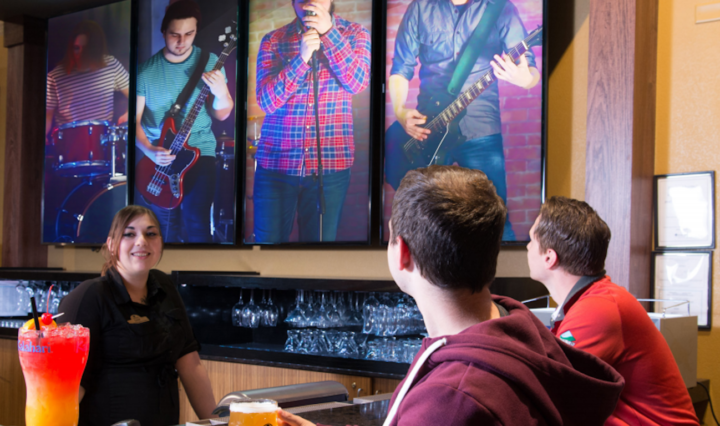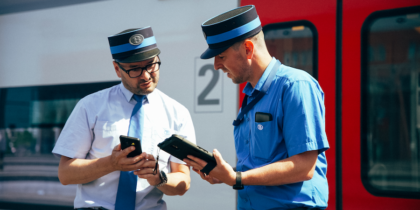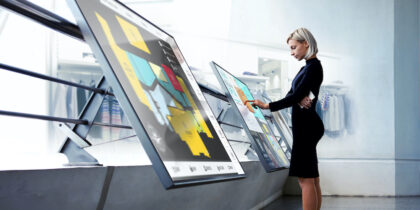When it comes to cruise ships, passengers expect a seamless customer experience on and off the vessel. Cruise lines can deepen brand satisfaction by developing a multichannel strategy that allows passengers to better customize their experience, and employees to be more responsive to guests’ needs.
By using technology to create a multichannel experience, a passenger who speaks Chinese can access the ship’s event schedule on their own mobile device or the TV in their room, or via digital displays throughout the high-tech cruise ship. Those who prefer French, Spanish or English can have the same seamless experience as the Internet of Things goes to sea.
This individualized experience, which occurs even on a vessel with 4,000 passengers, starts with a passenger’s first interaction with the brand. Ideally, the cruise line’s customer relationship management begins as the potential passenger first researches voyages and accommodations, food and beverage options, entertainment and available shore excursions. As they create a booking and select the various options, those preferences should seamlessly follow them to their onboard experience.
With the multichannel experience blending mobile apps and digital signage, passengers can have better control of their experience, with greater capability for customizations such as itinerary planning and e-commerce. Smartphones with biometric authentication (fingerprint and iris scanning) add a layer of security for access control throughout the ship as well.
Blending BYOD and Wearables
Some cruise lines are opting to create their own proprietary wearable solutions to support a multichannel strategy. Guest service hosts can use wearable devices to help them provide customer support for purchased packages, excursions, merchandise, gaming and other activities on the spot, rather than from a fixed service desk. And wearables give guests without mobile devices the same level of access to the ship’s information systems for real-time updates and service recovery if necessary.
In addition to a dedicated app available on smartphones and in-cabin displays, MSC Cruises will offer a sensor-packed wristband that enables guests to access their rooms and communicate with beacons placed around each ship. Similarly, Carnival Cruises introduced its Medallion Class service on four vessels, which will support a multichannel experience. While able to operate independently, the small, coin-like device will be connected to a digital concierge service called Ocean Compass, available on smartphones and tablets, kiosks, TVs and interactive surfaces located throughout the ship.
Samsung Smart TVs Make a Splash
Learn how to seamlessly deliver hotel content and connectivity through guests' devices. Download Now
High-tech cruise apps are another way for vessels to enhance the passenger experience by supporting experiential travel as a growing source of ancillary revenue. Customers are spending more on shore excursions, beverage packages and high-speed internet access, thanks in part to apps such as Royal Caribbean’s Royal iQ app for smartphones and tablets. The Royal iQ app integrates customers’ onboard experience with the Cruise Planner app, a tool that helps you pre-plan your vacation, for a seamless shore-to-sea experience that enables passengers to “better control their cruise before and during the trip,” the company states.
In addition to replacing paper-based cruise itineraries, mobile devices will also be able to replace or supplement room access technology by acting as digital hotel keys, something found in hotel properties such as Starwood, Aloft and Element.
Challenges of a Multichannel Strategy
In addition to the benefits, cruise lines also face challenges — technological and behavioral — in implementing a multichannel strategy.
For a high-tech cruise vessel, seamless integration requires back-end connectivity to ensure that the information passengers see on their devices is mirrored in the in-room display or shipboard signage, even with limited shipboard bandwidth. Entertainment experiences, such as starting a movie on the stateroom’s TV and finishing it poolside on a mobile device or watching an onboard show from a lounge chair, will become expected amenities from digital natives.
Additionally, after years of consumer advice to not use smartphones onboard to avoid high fees, cruise lines must educate customers that a high-tech cruise requires onboard Wi-Fi access, and won’t cause any surprises on their phone bills. Education on the benefits and the potential associated costs will be key for greater consumer adoption of onboard wearables and apps.
With consumers insisting on a connected experience across their personal and professional lives, there’s no turning back from the necessity for a multichannel strategy to engage and delight customers during a memorable time in their lives. Wearables and mobile user experiences are just some of the technological components to get your cruise line started in the right direction.
Learn how you can impress your guests and streamline operations by checking out our latest hospitality technology solutions.








